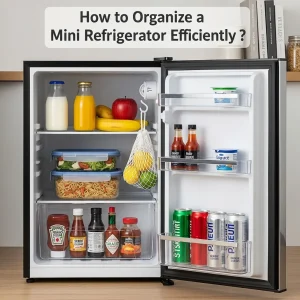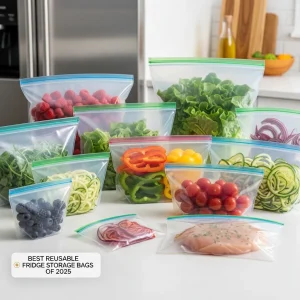My Personal Experience with Big Moves
I’ll never forget the first time I had to move my triple-door fridge. I stared at it, this massive, gleaming appliance, and felt a real sense of dread. It’s not just a piece of kitchen equipment; it’s a significant investment and a central part of your home. A mistake during moving can lead to costly repairs or, worse, a completely broken unit. Through trial, error, and a lot of research, I figured out a process that works. This guide is built from my real-world experience, and I want to make it easy for you.
Why This Move is Different
A triple door refrigerator is a different beast compared to a standard fridge. Its size, weight, and complex cooling system demand special attention. You can’t just tip it on its side and hope for the best. The compressor, which is the heart of the fridge, has oil that can leak into the cooling lines if it’s not handled correctly. This can ruin the appliance. Proper moving techniques are not just about avoiding dents; they’re about protecting the internal machinery.
Preparation: Your Key to a Smooth Move
Good preparation is the absolute most important part of this job. Rushing leads to damage. Let’s get everything ready.
1. Measure Twice, Move Once:

Before you do anything else, grab a tape measure. You need to know the exact dimensions of your refrigerator—its height, width, and depth. Now, measure every single space it needs to pass through: doorways, hallways, stairwells, and the dimensions of the moving truck itself. I can’t stress this enough. There’s no worse feeling than getting stuck in a hallway with a half-ton fridge.
2. Gather Your Supplies:

You will need a dedicated set of moving supplies. Here’s your checklist:
- Moving Dolly: A heavy-duty appliance dolly with straps is non-negotiable. Standard furniture dollies won’t cut it.
- Moving Straps: These help you and your helpers control the weight and navigate stairs.
- Packing Tape: Strong tape to secure doors and drawers.
- Moving Blankets or Furniture Pads: Several thick blankets to protect the finish from bumps and scratches.
- Stretch Wrap: This is a miracle product for moving. It securely holds the blankets in place and protects against dirt and moisture.
- Gloves: For a good grip and protecting your hands.
- Strong Helpers: Recruit at least one other strong person, but two is even better. Do not attempt this alone.
3. Prep the Fridge:

This is a multi-step process that should start at least 24 hours before move day.
- Defrost and Dry: Unplug the refrigerator. Remove all food items. Empty and wash all removable parts like shelves and drawers. Let them dry completely. Place towels inside to soak up any melting ice or moisture. Leaving water inside can lead to mold.
- Clean It: Once defrosted, give the interior a good clean with a mild detergent. Dry it thoroughly.
- Secure the Doors: Use your packing tape or stretch wrap to securely fasten the doors shut. Do not use rope, as it can damage the finish. Tape across the doors in an “X” pattern or use stretch wrap around the entire unit a few times to hold everything closed.
- Disconnect Carefully: When you’re absolutely ready to move it, carefully pull the fridge away from the wall and unplug it from the electrical outlet. If your model has a water line for the ice maker, you must shut off the water supply and disconnect the line. Have a towel ready for any residual water.
“The way we move our belongings tells a story about how we value them.” — Kyle Green
Moving Day: The Step-by-Step Process
This is it. With your supplies gathered and your team ready, it’s time to execute the plan.
1. The Lift: With your helpers, carefully tilt the refrigerator back slightly. Slide the appliance dolly underneath it, ensuring the base is centered and secure. Use the straps on the dolly to tightly fasten the fridge to it. The unit should feel like an extension of the dolly, not something wobbling on top.

2. Navigating the Path: One person should operate the dolly while the others spot and guide. The person on the dolly controls the weight and movement, especially on any incline. The spotters ensure the path is clear and help stabilize the fridge. Move slowly. Communicate constantly with your team.

3. Dealing with Stairs: This is the most hazardous part. If you have stairs, using moving straps is highly recommended for better control. The strongest person should be at the bottom, bearing the weight, while the person at the top guides the descent. Take one step at a time. If you have more than a few steps or a tight spiral staircase, seriously consider hiring professional movers for this part alone. Your safety is more important.

4. Loading the Truck: Once you’re outside, carefully wheel the fridge up the ramp into the truck. Position it against a wall or between other heavy, stable items to prevent it from shifting during transit. Use more moving blankets for padding and secure it with straps to the truck walls. Always transport the refrigerator in an upright position. This is the single best way to protect the compressor and cooling system.

Unloading and Installation
You’ve arrived! Now, reverse the process to get it inside.
- Carefully unstrap the fridge in the truck.
- Use the dolly to gently guide it down the ramp and into the new home.
- Maneuver it into its final spot in the kitchen, but leave a few inches of space between the back of the fridge and the wall for ventilation.
- Before you plug it in, you must let it stand upright for as long as the manufacturer recommends. This is critical. This waiting period, often 4 to 24 hours, allows the compressor oil to settle back into its proper place. If you plug it in too soon, you risk serious damage.
- Once the waiting period is over, plug it into a dedicated outlet. Reconnect the water line if you have one, checking for leaks. Then, you can turn the power on and adjust the temperature settings. It may take several hours to reach the correct temperature.
Frequently Asked Questions for How to Transport a Triple Door Refrigerator Safely?
How long should I let my refrigerator sit after moving before plugging it in?
Always refer to your owner’s manual for the manufacturer’s specific advice. A general rule is to let it stand upright for at least 4 hours, but 24 hours is the safest bet to ensure all fluids have settled completely.
Can I transport a refrigerator on its side?
It’s not recommended, especially for larger models. Laying it down can cause compressor oil to flow into the cooling lines, which can clog them and break the fridge. If you absolutely must, try to keep it as upright as possible and let it stand for significantly longer (up to 24 hours) before starting it.
Do I need to hire professional movers?
For a large, heavy item like a triple-door refrigerator, hiring professionals is often a wise decision. They have the right equipment, experience, and insurance to handle the job safely and efficiently, protecting both your appliance and your back.
“Preparation is the key to success. The more you prepare, the less you have to repair.” — Alex Hormozi
Conclusion
Moving a triple door refrigerator is a big task, but it’s absolutely possible to do it safely without any damage. It all comes down to patience, the right equipment, and a few strong friends. The most important steps are preparing the fridge properly, securing it to an appliance dolly, keeping it upright during the entire move, and allowing it to rest before you plug it in. By following this guide, you can protect your investment and enjoy a perfectly working refrigerator in your new home. Good luck with your move!
“It is not the strength of the body that counts, but the strength of the spirit.” — J.R.R. Tolkien (and your moving team!)







